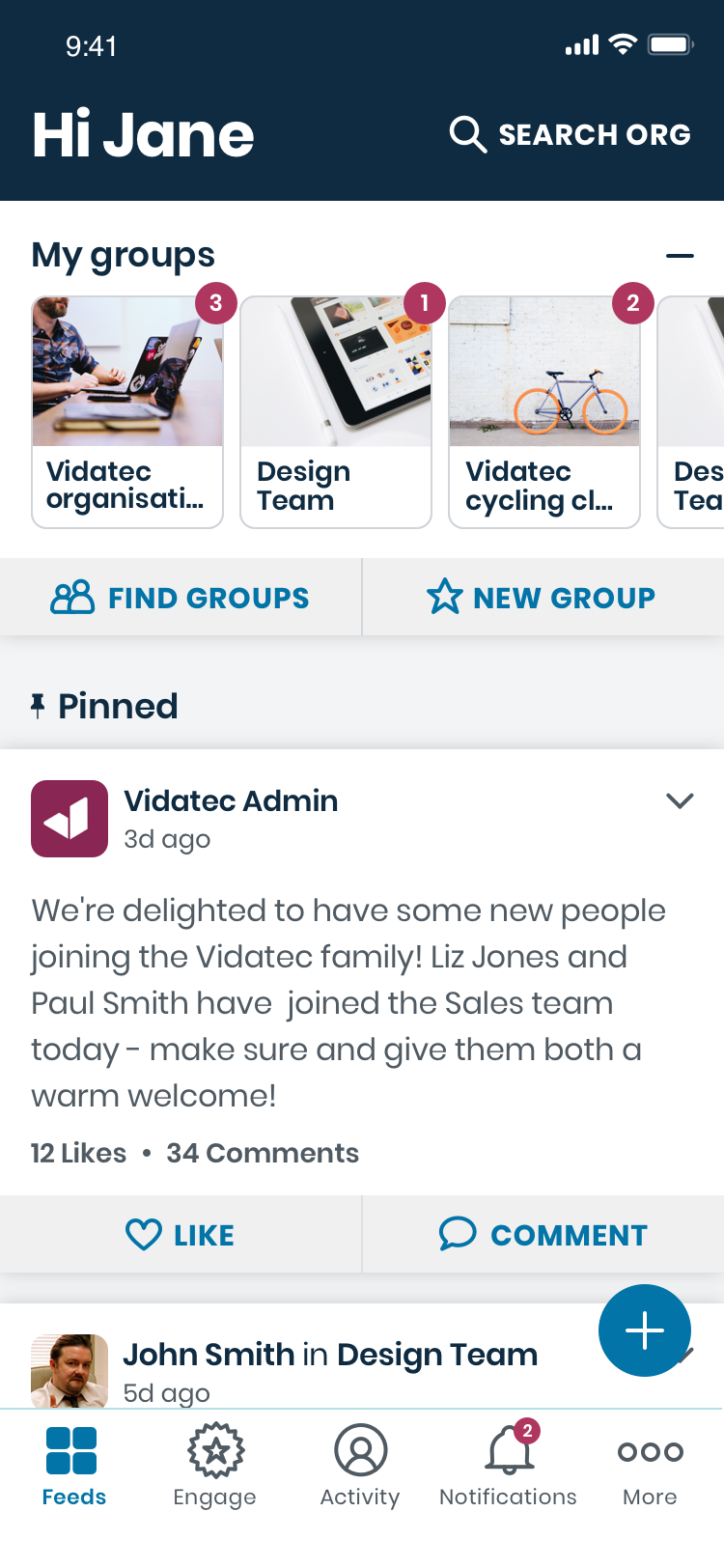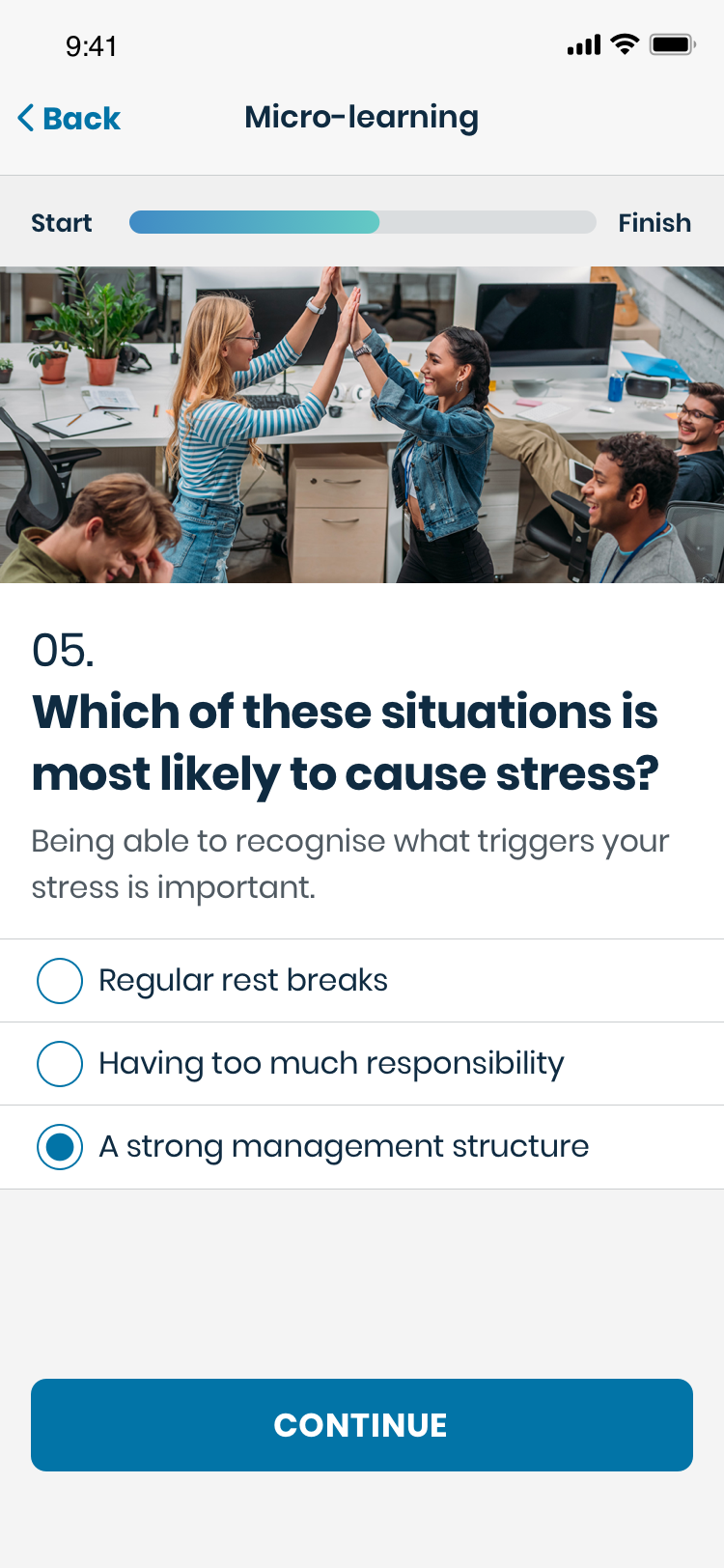Case Study
The original version of engage4, prototyped before my arrival at Vidatec, was conceptualised as a feedback, news and messaging platform which could be white-labelled for an employer. After what I assume was a fairly lukewarm reception to their prototype, they intended to rework the app to be more of a social experience, with less emphasis on messaging and a more explicit wellbeing focus.
I joined the company a week or so prior to a big event for HR professionals where Vidatec had rented a space in order to promote and gauge response to this new – at the time still hypothetical – feature set. In this week, I managed to pull together a new brand, some sample screens of an app, a flyer handout, booth designs and an animated video, all pitched to and approved by a team of around 8 people, including those attending the conference.
The following month, with some positive feedback on the brand and concept and a slightly more reasonable – but still tight – deadline, myself and a new start colleague designed an MVP version of the the new engage4. This included a comprehensive demo of a mobile app, a web version and a CMS to administer both. Upon completion, the decision was made to begin development immediately, presumably in an effort to keep some leads warm. This left little room or budget for any comprehensive user testing.
This disconnect meant we were made to rely on feedback from sales conversations and demos, a decision I warned would lead us to produce what would ultimately be a marketable product but not necessarily a widely adopted one. Despite this and fully aware of our bias, I ran an internal session with our staff in hopes that we could convince managers of the need for this kind of testing. This gave us a handful of valuable insights and highlighted some areas that may cause problems when adopted by other businesses. Once development was complete, we agreed on a roadmap of new features, including many that had been backlogged to save time.
Then there was a pandemic. And the decision was made to allow 3 month free trials of engage4 to businesses looking to keep their furloughed staff in the loop during lockdown. This was relatively successful but feedback from trial organisations continued to dominate how we evolved the product, relegating our planned roadmap.
Luckily, the platform being widely used gave us valuable analytics data on which features were broadly popular with regular users. Trial organisations were also happy for us to help survey their staff and interview wellbeing champions, which gave us more of an on-the-ground view into what users actually like about the platform, instead of what appeals to the senior staff paying for it. A year in with many trial periods ending, we had a handful of sign ups but adoption remained a major issue for both users and buyers. With more adequate user testing, we were able to confirm and communicate the value of many of the features we conceptualised in our original roadmap including a centralised area for company knowledge and files, the ability to run and promote campaigns through the app and a feature recommending potential points of contact for employees who are struggling.
Achievements
- As a small project team of around 5, we delivered a flexible brand and comprehensive suite of features for a brand new web and mobile application in around 12 months
- Sold a business with “fail fast and often” philosophy to product development on the efficacy of user research instead of just market research
Key learnings
- It’s important to sell stakeholders on the value of doing research with end users, rather than just buyers, if those are different and distinct groups
- Creating a reliable and desirable feature set to help employees with their wellbeing is particularly difficult, especially when some employers are uncomfortable addressing issues with financial wellbeing
- Free trials were an interesting way to beta test the product but resulted in significant resource being dedicated to actioning feedback from potential buyers who hadn’t yet committed to making a purchase
- We would have benefitted from finding a way to integrate our feature set into existing popular work communication and productivity tools, rather than expect users to download our proprietary application onto their personal devices and use it regularly









